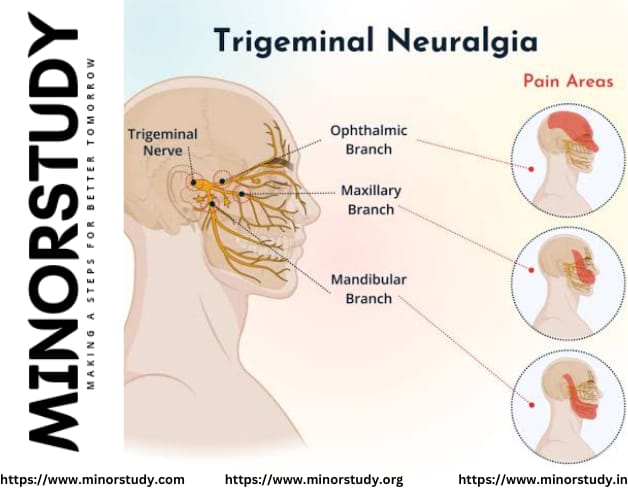🔍 Introduction: A Glimpse into the “Suicide Disease”
Trigeminal Neuralgia (TN) is often called the “suicide disease” due to the excruciating, unpredictable pain it causes. Affecting the trigeminal nerve, which is responsible for facial sensations, this condition can turn simple tasks like smiling, brushing teeth, or even a gust of wind into a nightmare of stabbing, electric-shock pain.
- 🧠 What is Trigeminal Neuralgia?
- 🕰️ Timeline & History of Trigeminal Neuralgia
- 📊 7 Shocking Facts About Trigeminal Neuralgia
- ❓ Frequently Asked Questions (FAQs)
- Q1: Is Trigeminal Neuralgia life-threatening?
- Q2: What causes Trigeminal Neuralgia?
- Q3: How is TN diagnosed?
- Q4: What treatments are available?
- Q5: Can Trigeminal Neuralgia be cured?
- 🧩 The Emotional & Daily Life Impact
- 🌍 Why It’s Important to Society
- 📅 Observances Related to Trigeminal Neuralgia
- 💖 Heartfelt Wishes for TN Warriors
- 🧠 Why Everyone Should Learn About Trigeminal Neuralgia
- 📌 Key Takeaways
- 🏁 Conclusion: Breaking the Silence Around Trigeminal Neuralgia
Despite its severity, Trigeminal Neuralgia remains largely misunderstood, misdiagnosed, and under-discussed in both medical circles and public health forums. This article explores everything about TN — from history and facts to how it shapes lives, and why it’s vital for society to raise awareness.
🧠 What is Trigeminal Neuralgia?
Trigeminal Neuralgia is a neuropathic chronic pain condition that affects the trigeminal nerve — the fifth cranial nerve — which splits into three branches covering the forehead, cheek, and jaw.
People with TN experience intense, shock-like pain in one side of the face, often triggered by trivial actions like:
Touch
Chewing
Talking
Smiling
Exposure to wind or cold
There are two types:
Type 1 (TN1) – Sudden, severe, and intermittent pain.
Type 2 (TN2) – Constant aching or burning pain, less intense but more persistent.
🕰️ Timeline & History of Trigeminal Neuralgia
| Year | Historical Highlight |
|---|---|
| 1672 | Dutch physician Johannes Bausch first documents facial pain resembling TN. |
| 1756 | French physician Nicolas André coins the term “tic douloureux” (painful tic). |
| 1850s | Scientists begin linking TN to vascular compression of the trigeminal nerve. |
| 1962 | First microvascular decompression surgery performed by Dr. Peter Jannetta. |
| 1980s | Introduction of anticonvulsant drugs for TN management. |
| 2000s | Rise in awareness and better imaging (MRI) diagnostics. |
| Today | Advancements in neurosurgery, radiosurgery (Gamma Knife), and neurostimulation for TN. |
📊 7 Shocking Facts About Trigeminal Neuralgia
It affects approximately 1 in 15,000 people, but many go undiagnosed for years.
Women over 50 are more prone—possibly due to hormonal or vascular changes.
TN pain is often misdiagnosed as dental issues, leading to unnecessary tooth extractions.
TN is triggered by seemingly harmless actions like brushing teeth or applying makeup.
The pain is often compared to an electric shock, or stabbing sensation.
Some people go years without proper treatment, worsening mental health and quality of life.
Trigeminal Neuralgia can be linked to multiple sclerosis (MS) or tumors in some cases.
❓ Frequently Asked Questions (FAQs)
Q1: Is Trigeminal Neuralgia life-threatening?
No, TN is not fatal, but it causes debilitating pain that severely affects mental health and quality of life. Depression and suicidal ideation are common without proper management.
Q2: What causes Trigeminal Neuralgia?
The most common cause is compression of the trigeminal nerve by a blood vessel. Other causes include:
Tumors
Multiple Sclerosis
Injury or stroke affecting the brainstem
Q3: How is TN diagnosed?
Diagnosis is usually clinical, based on:
Patient history
Pain pattern
Imaging tests (like MRI) to rule out structural issues
Q4: What treatments are available?
Medications – Anticonvulsants (Carbamazepine, Oxcarbazepine)
Surgery – Microvascular decompression
Non-invasive – Gamma Knife Radiosurgery
Alternative therapies – Acupuncture, nerve blocks, and biofeedback
Q5: Can Trigeminal Neuralgia be cured?
There is no guaranteed cure, but many find long-term relief through surgery or medication. Proper diagnosis and a multidisciplinary approach are key.
🧩 The Emotional & Daily Life Impact
Trigeminal Neuralgia doesn’t just affect the body — it affects the soul. Imagine fearing to speak, laugh, or wash your face, knowing a wave of pain may follow.
People with TN often:
Avoid social interaction due to fear of flare-ups.
Experience high anxiety and depression.
Struggle with routine tasks like eating or hygiene.
Feel isolated and misunderstood, as TN is invisible to others.
“It’s like lightning in my face. I’ve forgotten what pain-free feels like.” — TN Patient Testimony
🌍 Why It’s Important to Society
Early diagnosis reduces suffering: Awareness can reduce misdiagnosis and years of needless pain.
Mental health support is crucial: TN’s emotional toll requires community and psychological backing.
Health equity: In lower-income areas, lack of access to neurologists leaves many untreated.
Promotes research: Understanding TN can drive research in neuropathic pain and neuroplasticity.
Enhances empathy: Talking about “invisible illnesses” like TN fosters societal compassion.
📅 Observances Related to Trigeminal Neuralgia
Trigeminal Neuralgia Awareness Day – October 7
World Brain Day – July 22
Pain Awareness Month – September
Invisible Disabilities Week – October third week
These events help raise visibility and funding for research and support systems for sufferers worldwide.
💖 Heartfelt Wishes for TN Warriors
🌟 “May your pain ease, your voice be heard, and your days be brighter. You are not alone — your courage inspires others more than you know.” 🌟
Let us advocate for those who silently suffer, for compassion, research, and understanding can light even the darkest corners.
🧠 Why Everyone Should Learn About Trigeminal Neuralgia
It teaches empathy for silent, invisible pain.
It raises awareness of neuropathic and cranial nerve disorders.
It helps friends, family, and even dentists avoid misjudgment and support sufferers better.
It may inspire students and doctors to explore neuroscience, pain management, or palliative care.
📌 Key Takeaways
Trigeminal Neuralgia is one of the most painful conditions known to humanity.
Often misunderstood, but very real — with deep mental and physical impacts.
Early diagnosis and support systems can dramatically improve lives.
Raising awareness is vital — for those suffering now and those who may one day.
🏁 Conclusion: Breaking the Silence Around Trigeminal Neuralgia
Trigeminal Neuralgia is not just a neurological condition. It’s a life-altering force that demands medical attention, societal empathy, and public awareness. Every smile suppressed, every word left unspoken, and every touch avoided speaks of the silent war TN patients face.
Let this article be a voice — not only for awareness but also for hope, compassion, and future breakthroughs. Because no one should have to suffer in silence.








